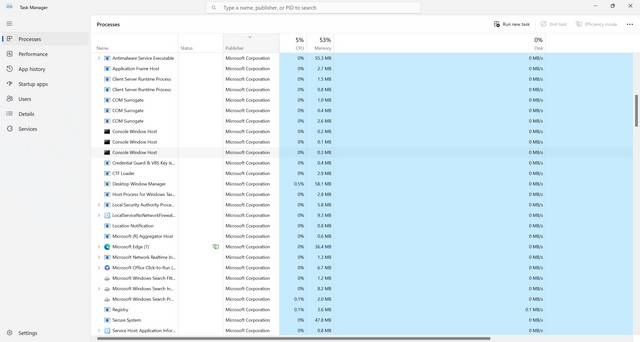When you open the Task Manager on your Windows computer, you may notice a process called “Client Server Runtime Process” (csrss.exe) running in the background. This process is an essential part of the Windows operating system and plays a crucial role in maintaining system stability and security. In this article, we will explore what the Client Server Runtime Process is, why it is running in Task Manager, and its significance in the Windows environment.

Understanding the Client Server Runtime Process
The Client Server Runtime Process (csrss.exe) is a critical system process that runs in the background on Windows operating systems. It is responsible for managing the majority of the graphical instruction sets and user-mode operations in the Windows environment. The process was first introduced in Windows NT 4.0 and has been an integral part of subsequent Windows versions.
The primary purpose of the Client Server Runtime Process is to provide a bridge between the user-mode applications and the Windows kernel. It handles various tasks, including managing graphical elements, handling input/output operations, and creating and destroying threads. Additionally, it plays a vital role in managing the security and integrity of the operating system.
Why is the Client Server Runtime Process Running in Task Manager?
Seeing the Client Server Runtime Process running in Task Manager is completely normal and expected. It is a critical system process that needs to be running for the proper functioning of the Windows operating system. If you try to terminate or disable this process, it will result in system instability and may even lead to a system crash.
One reason why the Client Server Runtime Process appears in Task Manager is that it is responsible for managing the graphical user interface (GUI) of Windows. It handles tasks such as drawing windows, managing menus, and processing user input. Therefore, it needs to run continuously in the background to ensure a smooth user experience.
Another reason for the presence of the Client Server Runtime Process in Task Manager is its role in maintaining system security. It is responsible for enforcing security policies, managing user sessions, and handling authentication requests. By running as a separate process, it provides an additional layer of protection against potential security threats.
Significance of the Client Server Runtime Process
The Client Server Runtime Process is a critical component of the Windows operating system, and its presence in Task Manager signifies its importance. Here are some key reasons why the Client Server Runtime Process is significant:
- System Stability: The Client Server Runtime Process ensures the stability of the Windows operating system by managing critical system operations and resources.
- Graphical User Interface: It is responsible for handling graphical elements, such as windows and menus, providing a seamless user experience.
- Security and Integrity: The process enforces security policies, manages user sessions, and handles authentication requests, contributing to the overall security and integrity of the system.
- Separation of User and Kernel Mode: The Client Server Runtime Process acts as a bridge between user-mode applications and the Windows kernel, ensuring a clear separation and preventing unauthorized access to system resources.
Should You Be Concerned?
While the presence of the Client Server Runtime Process in Task Manager is normal, it is essential to remain vigilant and ensure that the process is not compromised by malware or viruses. Malicious software may attempt to disguise itself as the Client Server Runtime Process to evade detection.
If you suspect any unusual behavior or suspect that the Client Server Runtime Process may be compromised, it is recommended to scan your system for viruses and malware. One reliable and effective tool for this purpose is Malwarebytes Free. It is a trusted antivirus and anti-malware software that can help detect and remove any potential threats.
Conclusion
The Client Server Runtime Process (csrss.exe) is an essential system process that runs in the background on Windows operating systems. It plays a crucial role in managing graphical elements, handling user input, and maintaining system security. Its presence in Task Manager is normal and signifies its significance in the Windows environment.
While the Client Server Runtime Process is a legitimate system process, it is important to remain cautious and ensure that it is not compromised by malware or viruses. Regularly scanning your system with reliable antivirus and anti-malware software, such as Malwarebytes Free, can help ensure the integrity and security of your Windows operating system.










